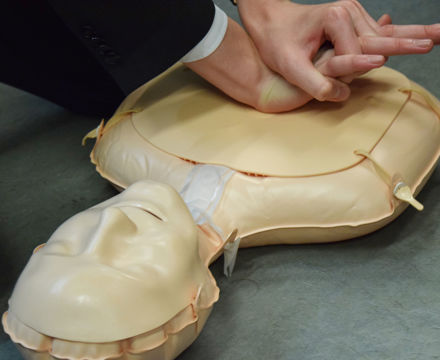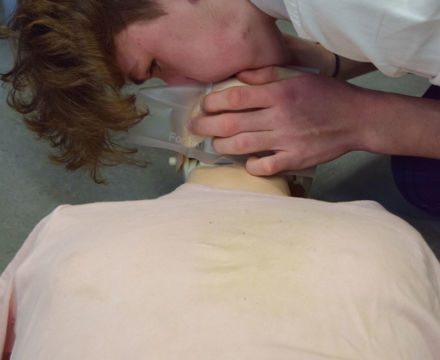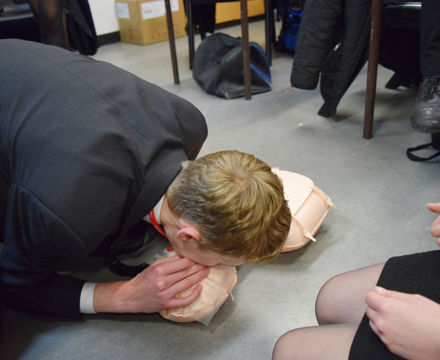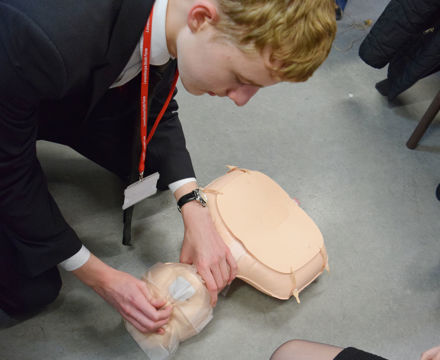- Home
- Communications
- News
- Elevating Year 12's life saving skills
Elevating Year 12's life saving skills
Back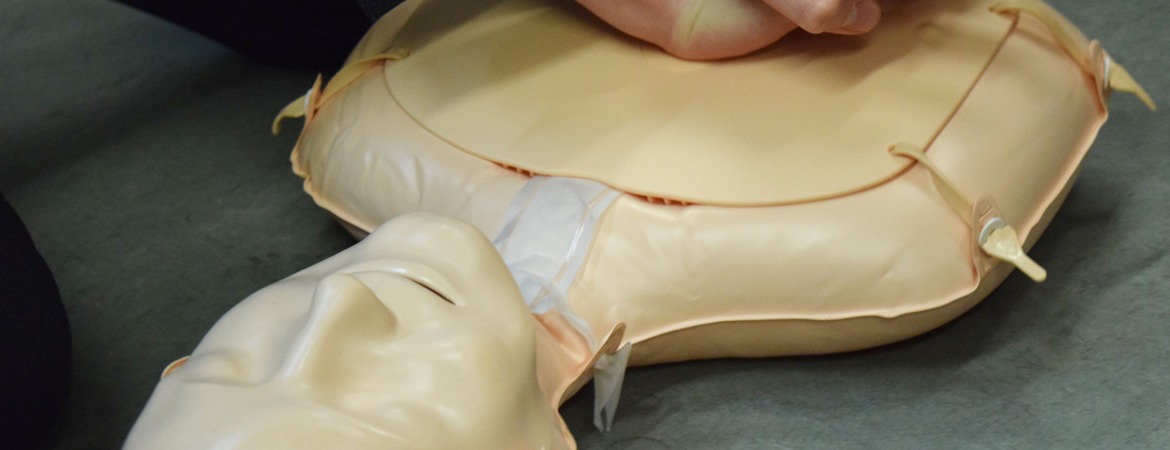
As part of our Elevate program, Year 12 students were learning life saving CPR skills today, with the help of Resusci Anne and Little Annie!
Students learnt about when appropriate use of Cardiopulmonary Resuscitation (CPR) is required and the basiscs on how to carry out this life saving procedure on adults and children.
CPR on adults
If you. have been trained in CPR, including rescue breaths, and feel confident using your skills, you should give chest compressions with rescue breaths
If you're not completely confident, attempt hands-only CPR instead.
Hands-only CPR
To carry out a chest compression:
- Place the heel of your hand on the breastbone at the centre of the person's chest. Place your other hand on top of your first hand and interlock your fingers.
- Position yourself with your shoulders above your hands.
- Using your body weight (not just your arms), press straight down by 5 to 6cm (2 to 2.5 inches) on their chest.
- Keeping your hands on their chest, release the compression and allow the chest to return to its original position.
- Repeat these compressions at a rate of 100 to 120 times a minute until an ambulance arrives or you become exhausted.
CPR with rescue breaths
- Place the heel of your hand on the centre of the person's chest, then place the other hand on top and press down by 5 to 6cm (2 to 2.5 inches) at a steady rate of 100 to 120 compressions a minute.
- After every 30 chest compressions, give 2 rescue breaths.
- Tilt the casualty's head gently and lift the chin up with 2 fingers. Pinch the person's nose. Seal your mouth over their mouth, and blow steadily and firmly into their mouth for about 1 second. Check that their chest rises. Give 2 rescue breaths.
- Continue with cycles of 30 chest compressions and 2 rescue breaths until they begin to recover or emergency help arrives.


